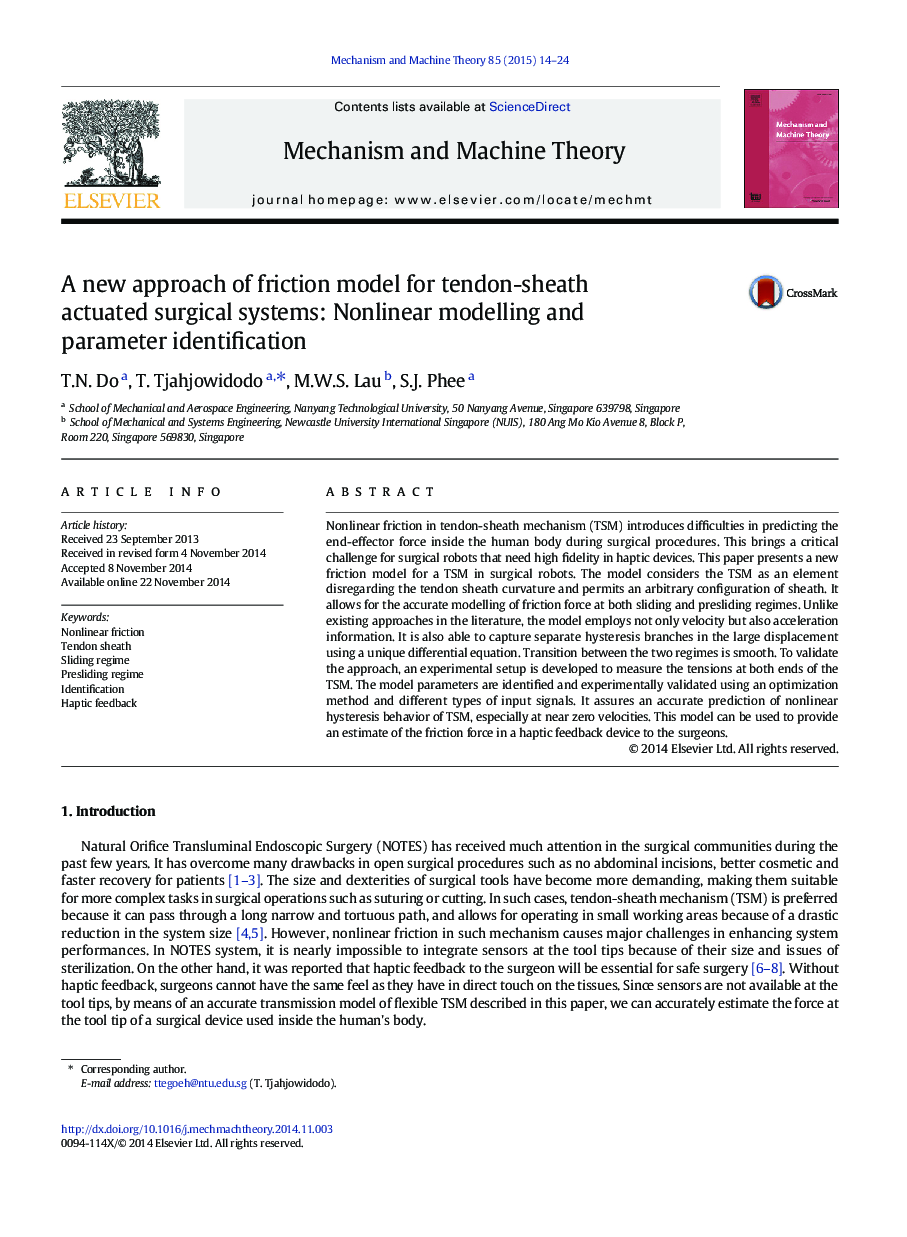| Article ID | Journal | Published Year | Pages | File Type |
|---|---|---|---|---|
| 801761 | Mechanism and Machine Theory | 2015 | 11 Pages |
•Dynamic friction model for tendon-sheath system is developed and proposed.•An experimental setup to validate the model is designed and built.•Model-parameter identification is carried out on the test setup.•The hysteresis behavior on the pulled/released phase is well captured.•The friction in sliding/pre-sliding regimes with smooth transitions is well modeled.
Nonlinear friction in tendon-sheath mechanism (TSM) introduces difficulties in predicting the end-effector force inside the human body during surgical procedures. This brings a critical challenge for surgical robots that need high fidelity in haptic devices. This paper presents a new friction model for a TSM in surgical robots. The model considers the TSM as an element disregarding the tendon sheath curvature and permits an arbitrary configuration of sheath. It allows for the accurate modelling of friction force at both sliding and presliding regimes. Unlike existing approaches in the literature, the model employs not only velocity but also acceleration information. It is also able to capture separate hysteresis branches in the large displacement using a unique differential equation. Transition between the two regimes is smooth. To validate the approach, an experimental setup is developed to measure the tensions at both ends of the TSM. The model parameters are identified and experimentally validated using an optimization method and different types of input signals. It assures an accurate prediction of nonlinear hysteresis behavior of TSM, especially at near zero velocities. This model can be used to provide an estimate of the friction force in a haptic feedback device to the surgeons.
